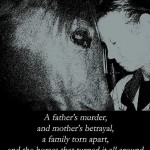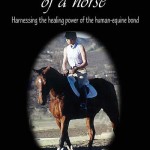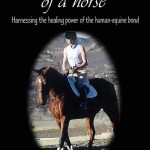NO SECRET SO CLOSE is the story of a the most unthinkable betrayal humanly possible — at only 24 years old, Claire Dorotik’s father has been murdered, her mother arrested, and now, in a sinister twist of fate, Claire’s mother points the finger at Claire, accusing her of killing her own father. Battling the feelings of loss, abandonment, terror, and dissociation, and also learning about them, Claire struggles to stay in her master’s program for psychotherapy. However, when Claire’s brothers also betray her and side with her mother, Claire is left all alone to care for the 18 horses she and her mother owned. As the story unfolds, what is revealed is the horses’ amazing capacity for empathy in the face of human trauma, and the almost psychic ability to provide the author with what had been taken from her. Arising from these horrifying circumstances, the most unthinkable heroes — the horses — show Claire that life is still worth living.
Excerpt #14 from NO SECRET SO CLOSE:
“No offer refused,” was what I had scribbled on a piece of cardboard with a permanent marker. We had eleven horses at the time and could only take five. That meant three trips in a two-horse trailer from Tucson, Arizona to Morgan Hill, California. My mom, my friend Kim, and I, made at least twenty signs and posted them on any street sign we could find all over the east side of Tucson, Arizona. Kim wrote the “fire sale” signs, I wrote the “no offer refused” signs, and my mom wrote the “fine horseflesh” signs. I thought horseflesh sounded weird, but she insisted that people equated it to quality horses.
It was the no offer refused part that caught the attention of the middle aged Hispanic man who came and bought three of the horses. We had made a package deal. They were all nice horses, but it was the young stallion that he really wanted. Hispanic men seem to be attracted to stallions. They dress them up with fancy saddles and bridles garnished with silver, teach them to do tricks, and use them in parades. They call them charro horses. But they are not known for being nice to them, and he didn’t even want to ride any of the horses first. I knew that would be my last goodbye. And my gut told me their lives would not be easy. I made Kim promise to tell me if she ever saw them again.
Continue reading NO SECRET SO CLOSE excerpt #14, by Claire Dorotik




